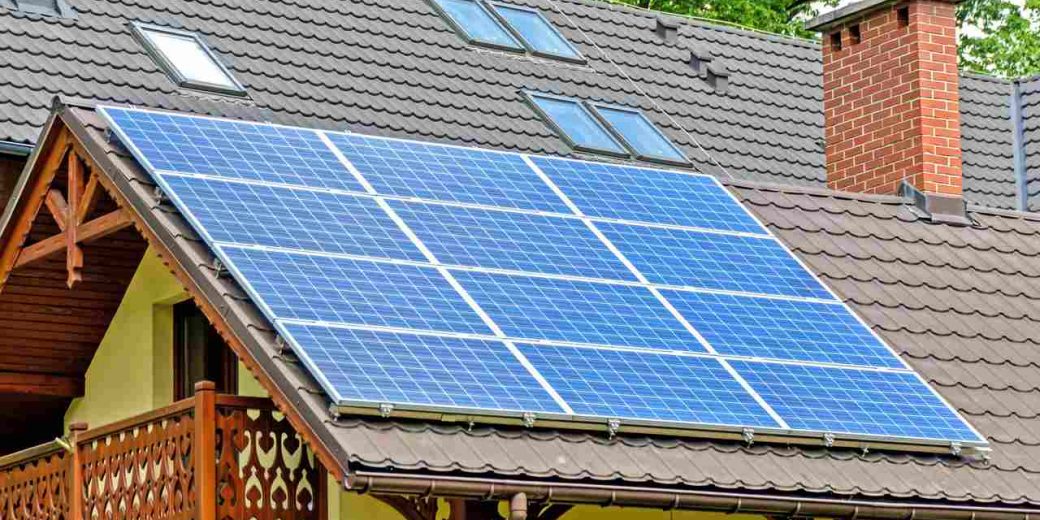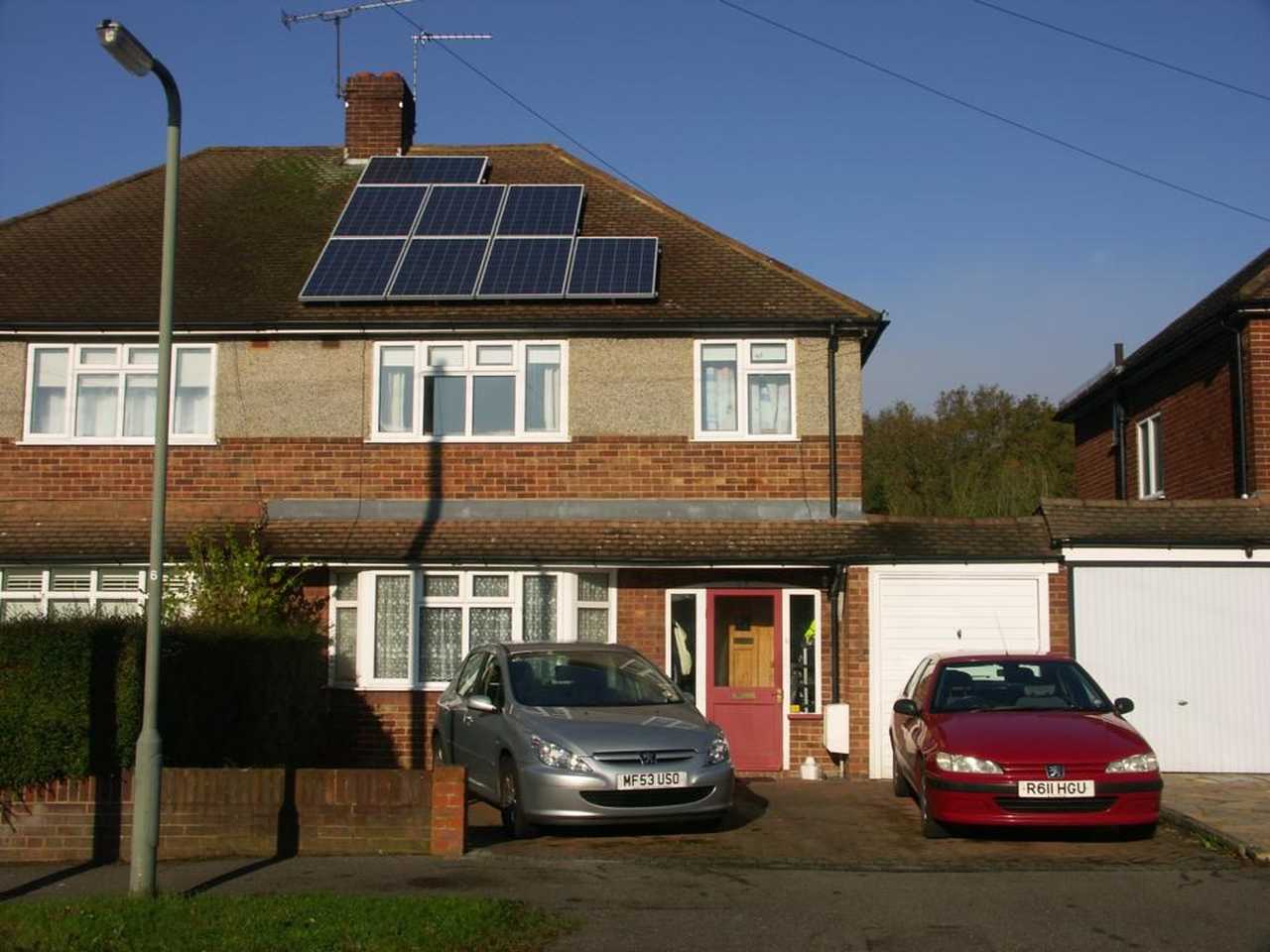How Much Roof Space is Needed for Solar Panels?

Exactly how much roof space for solar panels do I need?
Whether you are leasing roof space for solar panels or paying cash outright, the amount of raw roof are you need for your solar installation depends on how much electricity you want to produce and how many solar panels you need. The more electricity you want to produce, the more roof space you’ll need for your installation.
The average solar panel is about 3’x5’, which adds up to an area of 15 square feet total. The average residential solar installation in the US is about 20 solar panels, which at 15 square feet each adds up to 300 square feet for the entire solar array (a fancy word for the group of solar panels). An easier way to think about a solar array’s size is that 4 solar panels (a total of 60 square feet) is about the same dimensions as a single car. So you can think of a 20 solar panel system as equal to about 5 cars lined up on the roof.
So, if you are thinking about installing solar and want an idea of how many solar panels you can fit on your roof, you have a couple of different options. First, you can stand in front of your house and try to picture how many cars can comfortably fit on your roof side by side. This will give you a very general understanding of your roof’s capacity. If you want a more precise estimate, you can measure your roof either from the ground or up on the roof to find the square footage, then divide that by 15 square feet to get the number of solar panels that could fit on your roof.
Here’s an example to make all this a little clearer:
John wants to install solar on his roof and he has a large south-facing roof plane that is 30 feet long by 25 feet wide, for a total of 750 square feet. Dividing that total square footage by 15, we find that John can fit 50 solar panels on his roof.
This method works fairly well, but oversimplifies the situation.
When calculating how much space you have for your solar installation, you need to consider additional factors beyond just total square footage that can affect how many solar panels you can fit on your roof. We’ve highlighted a few of these below.
South-Facing Roof Planes Are Best for Solar
Solar panels are almost always installed on south-facing roof planes. See also: What is the Best Angle for Solar Panels?
South-facing panels see higher production than those facing east or west, because sunlight can hit the panels directly for most of the day, when the sun is strongest. North-facing roof planes don’t lend themselves well to solar, since they don’t see direct sunlight and production will be much lower. Solar companies will occasionally install on north facing roofs if there’s no other options, but generally try to steer clear of them. If you’re calculating the square footage of your roof to see how many solar panels will fit, start by measuring the south-facing roof.
Typical solar installations also need to have all the solar panels on the same roof plane, facing the same direction and at the same tilt. This is so the inverter can function properly and the solar panels can produce as much energy as possible. Microinverters, on the other hand, optimize each solar panel individually and therefore allow installers to place solar panels on any roof plane, regardless of tilt or direction. However, microinverters are more expensive, so homeowners must assess if they are truly a necessity for their installation.
Shape, Local Codes, and Pipes Affect Usable Roof Space
You’ve got the basics down and know how to calculate the roof space you need for your solar installation, based on the size of a typical solar panel and how many solar panels a typically installation has.
Now let’s add another layer to that, which will allow you to further refine how much roof space you have available for your solar panels. Below are factors that can affect how much space you have available to install solar panels.
- The number and size of your roof planes – Many newer homes were designed with numerous, small roof planes facing various directions and tilts. This presents a challenge to solar installers as each roof plane must be measured for dimension, angle, and orientation. Most solar companies require a roof plane to be large enough to hold at least 2 solar panels, and many homes with numerous roof planes might have up to 5 or 6 small groups of solar panels placed throughout the roof, as opposed to a single large solar array. Complex roofs like this require microinverters to optimize each panel regardless of direction or tilt. If your home has numerous smaller sections, it can be difficult to estimate your roof size and its likely best to simply let your installer ascend the roof and measure each section for you.
- The shape of your roof – Square and rectangular roofs lend themselves well to solar installations. Since solar panels are rectangular, so there is little wasted space. If your roof planes are triangular or trapezoidal, there will be more space on the roof that can’t be covered by solar panels, lowering the amount of energy you can potentially produce.
- Dimensions of your roof – Sometimes, a rectangular or square roof just isn’t tall enough for all the panels you want to install. Let’s say you plan on installing 18 solar panels, in 3 rows of 6 panels each, which in total equals 18 feet wide by 15 feet tall. You measure your roof and –oh no!- it’s only 12 feet tall! Having the top section of a row of solar panels stick out above the top of your roof is a building code no-no, so that’s not really an option. In this situation, installers will often place the top row of solar panels in landscape mode, allowing you to fit three panels on the top row, and then relocate the remaining three to a different section of the roof.

Note the top panel in landscape mode. A good use of space. source: jonsowman via Flickr
- Fire Setbacks – The International Fire Code (IFC) has rules requiring ‘fire setbacks’ for solar installations. These rules say that solar arrays need to be ‘set back’ from the edge of the roof at least 3 feet, creating a corridor where firefighters can safely move on the roof without stepping on the solar panels, which are smooth and quite slippery when wet. Many in the industry have decided 3 foot corridors is too limiting to solar installations, as they take up quite a bit of valuable roof space. In the end, each city’s building department can to enforce the rule as is or alter it to fit their own area. Your solar installer will be familiar with the code requirements of each city and county they work in. If you’re curious as to what your city requires, you could always call your building department or ask your installer.
- Equipment on the Roof – Satellite dishes, vents, pipes, existing solar water heaters, and evaporative coolers can all affect usable space for solar panels. Most of these can be relocated to a different area of the roof or simply removed. Be sure to take these into account when you are assessing your roof space, as most jurisdictions don’t allow solar panels to cover vents or pipes without rerouting them to vent outside the panels.
Going back to the original question: ‘How much roof space is needed for solar panels?’, we find that it depends on your energy use and how many solar panels you want to install.
Also, numerous factors can influence this, including the shape and dimensions of your roof, existing equipment on the roof, and your local building department’s code requirements. If you’re interested in learning more on similar topics, feel free to read over our article Calculating the Kilowatt Hours Your Solar Panels Produce.
